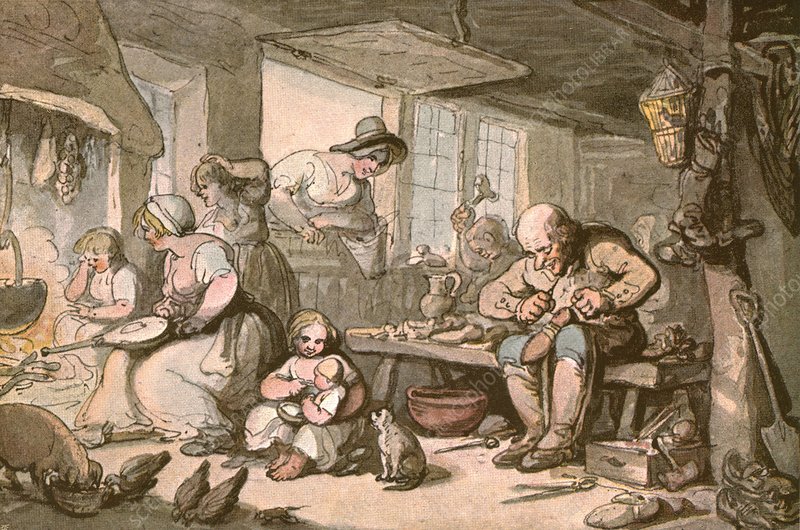The parish of East Hoathly comprised around 350 inhabitants at the time Thomas Turner was writing his diary and boasted two shoe menders: Thomas Davey and Robert Hook. There was enough work for both to make a living: the inhabitants of the parish seem to have been hard on their shoes. There appears to have been no rivalry between the two men. In February 1756 Thomas Davey brings Turner a new boot to try on “being 1 of a pair I have bespoke near 12 months of Robt. Hook”.[1] Perhaps there is a note of complaint here at the delay in making the boots.
While Thomas Davey was a friend of Turner, often visiting his house of an evening, Robert Hook knew Turner as a member of the small group of village dignitaries and tradesmen who ran parish affairs. Hook served as surveyor of the highways in 1756,[2] and as headborough during 1758.[3] In 1757 at the end of Hook’s term as surveyor, he asked Turner to help draw up the accounts to be presented to the Justices of the Peace. This necessitated Turner meeting him at Jones’s, the local inn, and Turner’s record of the evening contains a condemnation of “that most detestable poison called gin!”[4]

In February 1758, in his capacity as headborough, Robert Hook accompanied Thomas Turner to “take up” Mary Hubbard, the servant of Thomas Osborne Senior, to persuade her to swear the father of her illegitimate child. The year before Hook was also involved in the pursuit of George Hyland, who led the parish officers a merry dance over his reluctance to marry Ann Durrant, having fathered her child, until enough inducements were offered.
Hook wrote a clear hand, submitting long bills annually to the parish Overseers for shoe repair and shoe making. His tone is informal; he refers to children only by their family name e.g. ‘young Trill’, or ‘young Bristow’. This may be because the father’s name was the important one and his wife and children mere dependants, or an indication of familiarity and social cohesion within the parish.
Robert Hook died in early 1775 – the last item on the invoice paid after his death is on February 10th. Besides shoe mending, this final invoice itemises the supply of ‘poals’ and bundles of laths for Thomas Sinden’s house,[5] which suggests that Robert Hook possessed or cultivated a parcel of land, which would have supplied the wood, or that he acquired the wood by trade.
Robert Hook was married with at least two children that we know of. In 1758, his daughter Mary described as “a poor wild girl”[6] had a trial as maid in Thomas Turner’s house but this did not work out and one month later “Molly Hook went away.”[7] Mary Hook would have been twelve or thirteen at the time. In 1767 Mary married William Start, or Sturt, a member of another East Hoathly family. A William Hook was taken on as an apprentice to Hook in 1773, but it is not clear whether he was Robert’s son, or a relative. Robert Hook’s family remained in the village after his death, and his son, another Robert Hook, was also involved in parish affairs. In 1782 he obtained a settlement certificate on behalf of Elizabeth Overing from the Uckfield magistrates. This second Robert Hook, who was also a cordwainer, died in 1824 at the age of 70 and is buried in the Friends Burying Ground in Lewes.
[1] The Diary of Thomas Turner 1754-1765 (1984), David Vaisey (Ed) Page 79
[2] Op. cit. Page 79
[3] Op. cit. Page 133
[4] Op. cit. Page 79
[5] ESRO: PAR378/31/3/14 Itm 22 Lines 19 and 20
[6] The Diary of Thomas Turner 1754-1765 (1984), David Vaisey (Ed) Page 154
[7] Op. cit. Page 158